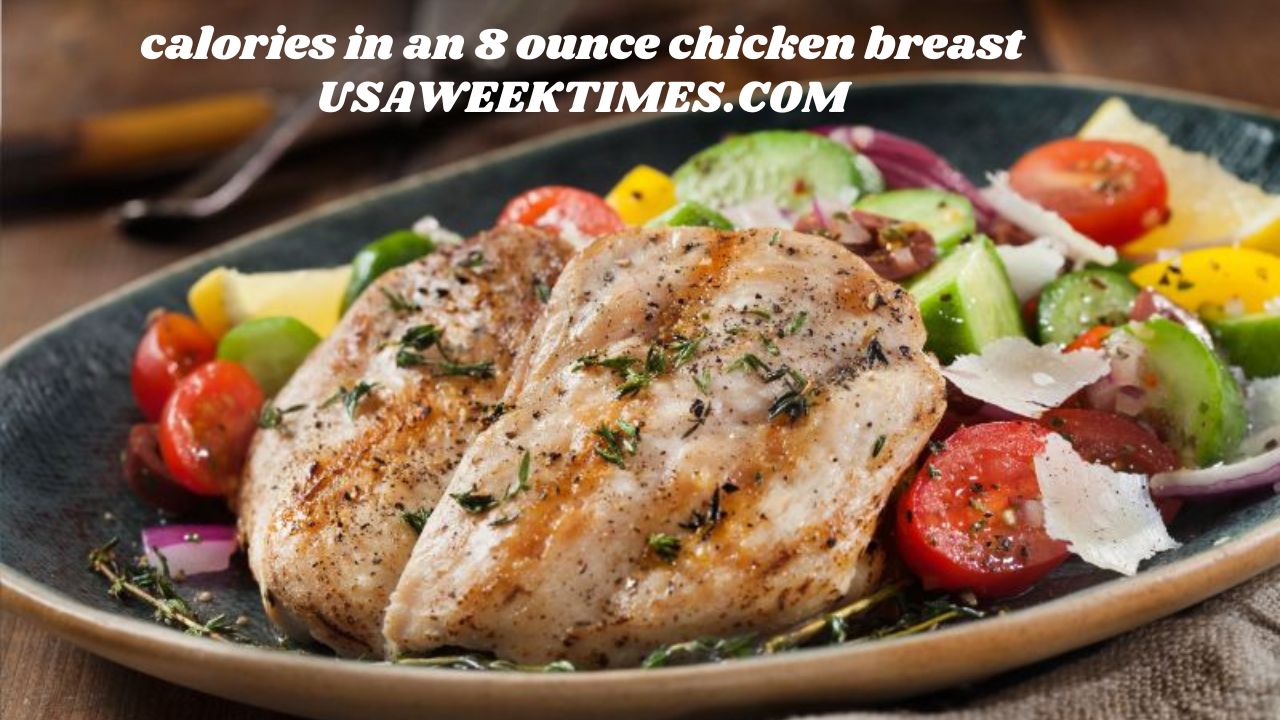Calories in an 8 Ounce Chicken Breast: A Detailed Guide to Nutrition and Health
Chicken breast is widely regarded as one of the healthiest sources of lean protein. Whether you’re working on building muscle, losing weight, or simply trying to maintain a balanced diet, chicken breast plays a vital role. However, like any food, it’s important to understand its nutritional content, especially when it comes to calories. This article delves into the specifics of the calories in an 8-ounce chicken breast, along with its nutritional benefits, considerations, and how it fits into various diets.
What is an 8 Ounce Chicken Breast?
An 8-ounce chicken breast refers to the weight of a boneless, skinless chicken breast. The average chicken breast weighs around 6-7 ounces, but an 8-ounce serving is larger than the typical portion size. Depending on how it’s prepared (grilled, baked, or fried), the calorie content may vary, but the basic composition remains the same. In this guide, we’ll focus on the calories in an 8-ounce chicken breast when it is grilled or baked without excessive oil or butter.
The Caloric Breakdown of an 8 Ounce Chicken Breast
On average, an 8-ounce serving of cooked, skinless, boneless chicken breast contains about 300-350 calories. This estimation assumes the chicken is grilled, baked, or pan-seared without adding a lot of oil, butter, or other high-calorie cooking ingredients.
Protein in an 8 Ounce Chicken Breast
One of the primary reasons people consume chicken breast is its high protein content. An 8-ounce chicken breast typically provides around 50-60 grams of protein. Protein is essential for muscle repair and growth, and it can also help in weight management by promoting feelings of fullness. This high-protein food is a perfect choice for anyone looking to maintain muscle mass while losing fat or maintaining an active lifestyle.
Fat Content in an 8 Ounce Chicken Breast
Although chicken breast is often labeled as a “lean” protein, it still contains some fat. An 8-ounce serving generally contains between 5 to 8 grams of fat, depending on how it’s cooked. The majority of this fat is unsaturated, which is considered healthy. Skinless chicken breast is far lower in fat compared to dark meat (such as thighs or wings) or skin-on chicken, making it an ideal choice for those on calorie-conscious or fat-restricted diets.
Carbohydrates in an 8 Ounce Chicken Breast
Chicken breast contains virtually no carbohydrates, making it a great choice for low-carb diets, such as keto or paleo. Carbohydrates are the body’s primary source of energy, but in controlled amounts, chicken breast fits perfectly into a carbohydrate-restricted diet without compromising nutrition.
How Cooking Methods Affect Calories in Chicken Breast
Cooking methods significantly influence the calorie count of chicken breast. While an 8-ounce chicken breast has around 300-350 calories when grilled or baked, the number can rise considerably depending on how you prepare it.
- Grilled Chicken Breast: Grilling is one of the healthiest methods for cooking chicken breast, as it uses little to no fat or oil. A grilled chicken breast retains the natural flavors and has a relatively low calorie content.
- Baked Chicken Breast: Baking without excessive oil also keeps the calorie count relatively low. For a more flavorful result, you can marinate the chicken in herbs and spices without adding many calories.
- Fried Chicken Breast: If you choose to fry the chicken breast, especially with breading or coating, the calorie content increases significantly. The oil absorbs into the chicken, adding both fat and calories. Fried chicken breasts can contain up to 500-600 calories for an 8-ounce serving.
- Chicken Breast with Skin: If you leave the skin on the chicken breast, the calorie content will rise due to the extra fat in the skin. For an 8-ounce portion, the calorie count could increase by 100-150 calories.
Nutritional Benefits of Chicken Breast
Beyond the calorie count, chicken breast offers a range of nutritional benefits that contribute to a healthy diet.
High in Protein for Muscle Growth
Chicken breast is renowned for its high protein content, which is essential for building and maintaining muscle mass. It contains all nine essential amino acids, making it a complete protein source. This makes chicken breast an excellent choice for athletes, bodybuilders, or anyone looking to maintain a healthy muscle-to-fat ratio.
Rich in Vitamins and Minerals
In addition to protein, chicken breast is packed with essential vitamins and minerals. These include:
- B Vitamins: Chicken breast is rich in B vitamins, including niacin (B3), B6, and B12. These vitamins play a vital role in energy production and maintaining brain function.
- Phosphorus: Chicken breast provides a good amount of phosphorus, which is essential for maintaining strong bones and teeth.
- Selenium: This antioxidant plays a role in protecting cells from oxidative stress and supports the immune system.
Supports Weight Management
Given its high protein content and low fat, chicken breast is often a go-to food for those looking to lose weight. Protein increases satiety, helping you feel fuller for longer periods, which may reduce overall calorie intake. Additionally, since chicken breast is a lean protein, it provides fewer calories compared to other meat options like beef or pork, making it a perfect inclusion in a calorie-controlled diet.
Chicken Breast and Different Diets
Different diets can benefit from the inclusion of chicken breast, thanks to its balance of protein, low fat, and minimal carbohydrates.
- Keto Diet: Chicken breast fits perfectly into a ketogenic diet, which is high in fats and low in carbs. Its minimal carb content ensures you remain in ketosis while still providing ample protein to maintain muscle mass.
- Paleo Diet: As part of a paleo diet, chicken breast is an ideal source of lean protein. The diet focuses on whole, unprocessed foods, and chicken breast fits this guideline perfectly.
- Low-Fat Diet: If you’re looking to reduce fat intake, skinless chicken breast is a great option. With only around 5-8 grams of fat per 8-ounce portion, it’s much lower in fat compared to many other animal-based proteins.
- Bodybuilding Diet: For bodybuilders, protein intake is crucial, and chicken breast is a top choice. Its high protein content supports muscle recovery and growth, and its low fat helps maintain a lean physique.
Portion Sizes and Calories in Chicken Breast
Understanding the right portion size is crucial for managing your calorie intake. A typical serving size of chicken breast is around 3-4 ounces, which would contain roughly 120-150 calories. However, many people opt for larger portions, such as an 8-ounce serving, which provides a more substantial amount of protein for those with higher nutritional needs, like athletes or individuals with active lifestyles.
For individuals trying to maintain or lose weight, it’s important to monitor portion sizes and avoid overeating, even with healthy options like chicken breast. While an 8-ounce chicken breast offers nutritional benefits, consuming too much can lead to unnecessary calorie intake.
Conclusion: How Many Calories Are in an 8 Ounce Chicken Breast?
In summary, an 8-ounce chicken breast contains approximately 300-350 calories, depending on the cooking method. It’s a high-protein, low-fat option that can fit well into many dietary plans. Understanding the nutritional profile of chicken breast helps you make better food choices and tailor your diet to your personal health goals.
Whether you’re trying to lose weight, build muscle, or just maintain a healthy lifestyle, an 8-ounce chicken breast is a solid and nutritious choice. Remember that how you cook the chicken can affect its calorie content, so opt for grilling, baking, or roasting for the healthiest options.




